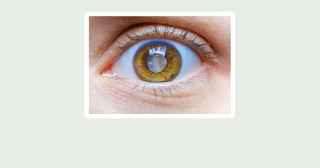Cataracts are a clouding of the natural lens of the eye, often described as a film developing over your vision. This clouding can gradually make your vision blurry, hazy, or milky, impacting your daily life in various ways. But fear not! Understanding cataracts is the first step towards regaining clear vision and enjoying the world around you with renewed focus.
What are cataracts?
The lens of your eye is a clear, flexible structure that focuses light onto the retina at the back of your eye, allowing you to see clearly. As we age, proteins in the lens can clump together, forming cataracts. These clumps scatter and block light from passing through the lens, resulting in blurry vision.
Common symptoms of cataracts:
- Blurred, cloudy, or hazy vision
- Difficulty seeing clearly at night
- Sensitivity to glare
- Double vision
- Faded colors
Types of cataracts:
- Nuclear cataracts: These form in the center of the lens and are the most common type.
- Cortical cataracts: These develop in the outer layers of the lens.
- Posterior subcapsular cataracts: These form at the back of the lens.
- Congenital cataracts: These are present at birth.
Causes of cataracts:
- Age: Cataracts are most common in older adults, with over half of people over 75 having some degree of cataracts.
- Genetics: Family history can increase your risk of developing cataracts.
- Medical conditions: Diabetes, high blood pressure, and certain medications can increase your risk.
- Eye injuries: Trauma to the eye can increase your risk of cataracts.
Diagnosis and treatment of cataracts:
Cataracts are diagnosed during a comprehensive eye exam. If cataracts are affecting your vision, your doctor will recommend cataract surgery. This is a safe and effective outpatient procedure that involves removing the cloudy lens and replacing it with an artificial lens (IOL).
Living with cataracts:
While cataracts are a common age-related condition, they are not a cause for alarm. Early detection and treatment can prevent vision loss and significantly improve your quality of life. With advancements in cataract surgery, the procedure is minimally invasive and boasts a high success rate.
Here are some additional tips for living with cataracts:
- Schedule regular eye exams: Early detection is key to managing cataracts effectively.
- Wear sunglasses: Protect your eyes from harmful UV rays, which can contribute to cataract development.
- Use artificial lighting: Brighter light can help you see more clearly.
- Avoid smoking: Smoking can increase your risk of developing cataracts.
- Eat a healthy diet: Eating a balanced diet rich in fruits, vegetables, and whole grains can help protect your eye health.
Remember, cataracts are a treatable condition. By understanding the symptoms, causes, and treatment options, you can take control of your vision and enjoy a brighter future. If you have any concerns about your eye health, don't hesitate to consult your doctor.
I hope this blog post has been informative and helpful. Please feel free to share it with your friends and family who may be interested in learning more about cataracts.

Comments
Post a Comment